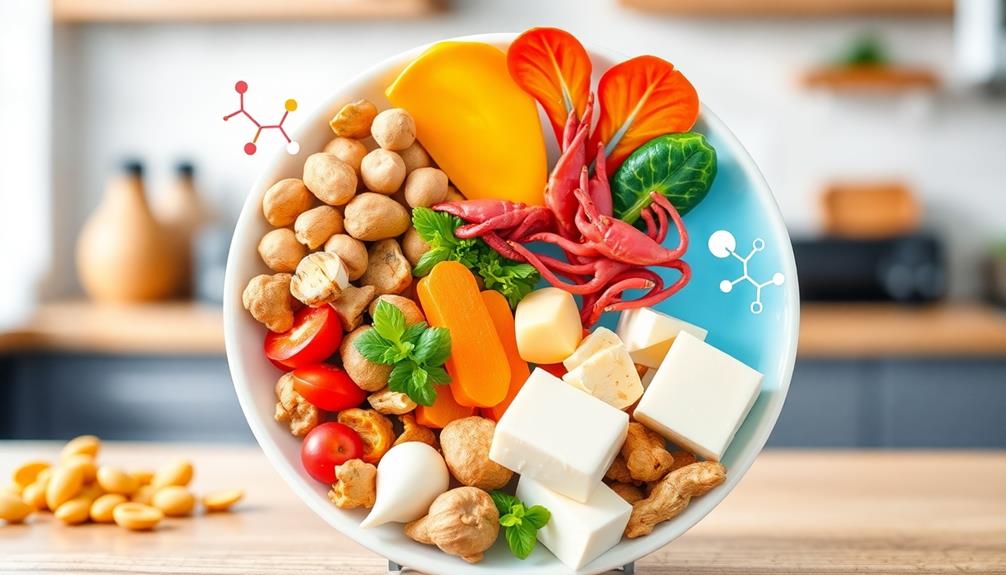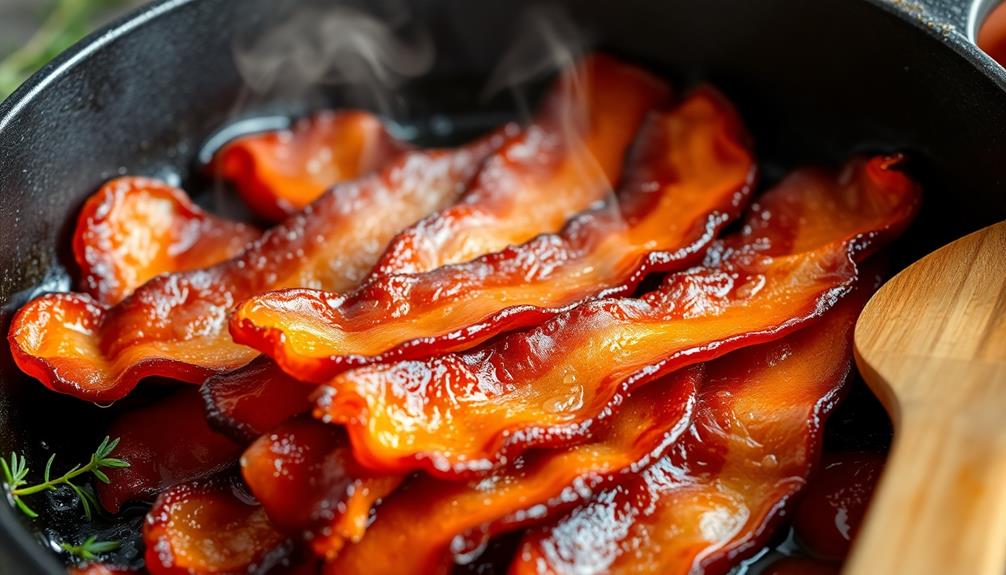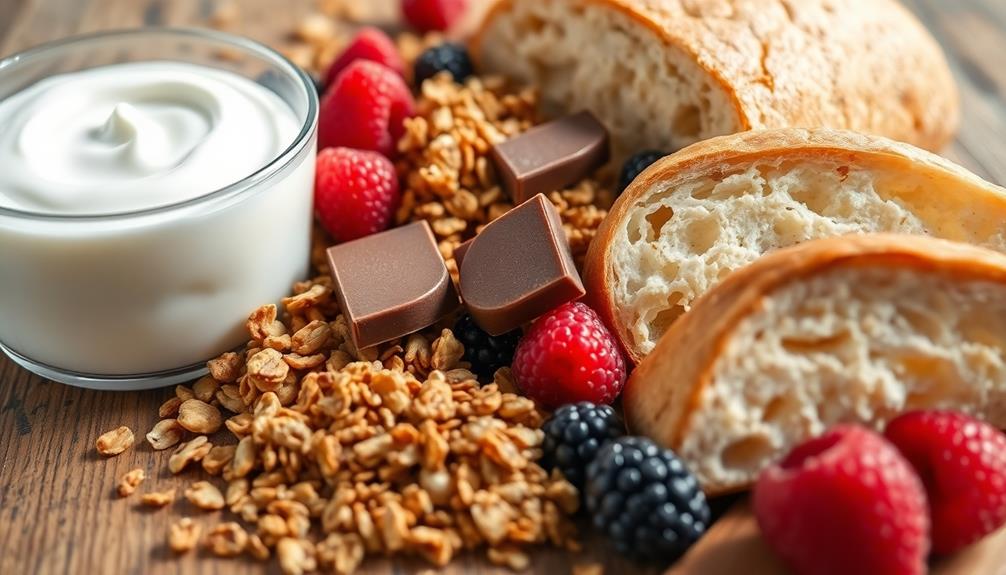Food allergies and intolerances can be tricky, but understanding them makes family meals safer and more enjoyable! Here's a quick breakdown:
- Food Allergies are immune responses to proteins, causing symptoms like hives and swelling, often quickly after eating.
- Food Intolerances result in digestive issues, showing up later, like bloating or cramps.
Common allergens include peanuts and eggs, while gluten often causes intolerances. Factors like genetics and early diet play a big role, too! Knowing their differences can help you prepare yummy and safe dishes. So, get ready for tasty times ahead as you learn how to keep your loved ones safe!
Key Takeaways
- Food allergies trigger an immune response to proteins, while intolerances involve non-immune reactions, often leading to digestive issues.
- Genetic predisposition and environmental factors, like hygiene and dietary patterns, influence the likelihood of developing food allergies.
- Common allergens include peanuts, eggs, and milk, with reactions varying from mild symptoms to severe anaphylaxis.
- Early introduction of allergenic foods may decrease the risk of developing allergies in children.
- Diagnosis involves skin prick or blood tests for allergies, whereas intolerances are tracked through dietary observation.
Mechanism of Food Allergies
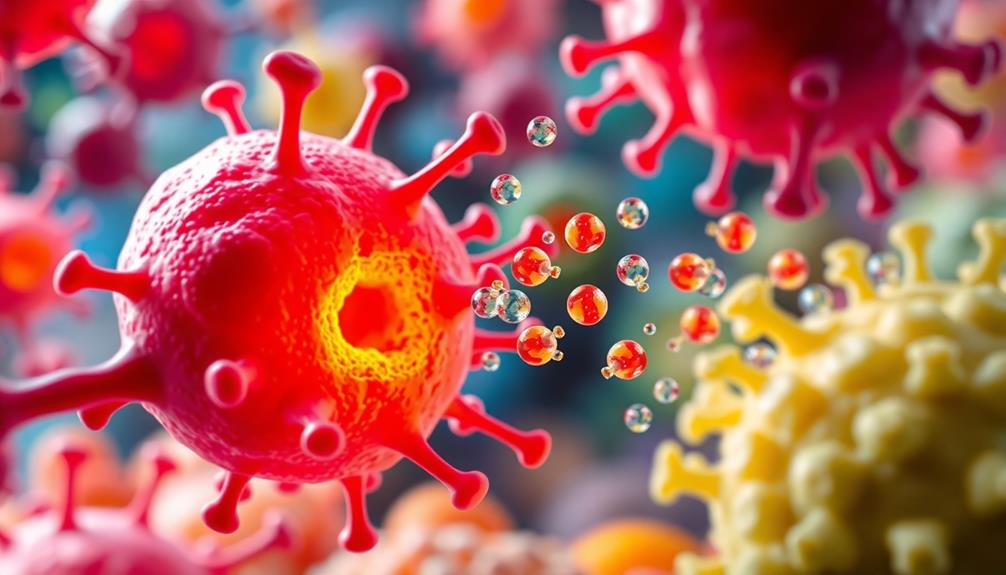
Food allergies affect millions of people worldwide, and understanding their mechanism is essential for managing them. When you eat something your body sees as a threat, your immune system goes into action! It mistakenly identifies certain food proteins as harmful, leading to the production of special fighters called IgE antibodies. These little helpers prepare your body for future encounters with the same food.
For instance, certain ingredients commonly used in Indian cuisine, such as nuts in desserts like Rasgulla, can trigger allergic reactions in sensitive individuals.
Here's how it works:
- First Encounter: Your immune system meets the allergen for the first time and creates IgE antibodies.
- Subsequent Encounters: If you eat that food again, the IgE antibodies trigger allergic reactions to foods, like hives or itching. In serious cases, it can even lead to anaphylaxis, which is super scary!
- Factors at Play: Genetics, environment, and the timing of when you first try these foods all influence whether you develop allergies.
Exciting research shows that introducing allergenic foods early can help reduce the risk of allergies!
Distinguishing Allergies From Intolerances

Understanding the difference between food allergies and intolerances is key to managing your health. Food allergies are serious! They involve an immune response to certain proteins in food, causing symptoms that can show up quickly after you eat.
For instance, some people may have an allergic reaction to proteins found in common ingredients like eggs, which are used in dishes such as Chinese Steamed Egg. These symptoms can range from mild hives to severe reactions like anaphylaxis.
On the other hand, food intolerances are usually less severe and stem from non-immune chemical reactions. They can take longer to appear and often cause digestive issues like bloating or diarrhea. Unlike food allergies, which involve the immune system, food intolerances primarily affect the digestive system and may cause discomfort after consuming certain foods. Some individuals experience fatigue or sluggishness after a large meal, prompting curiosity about **what causes food comas**. In many cases, this tiredness is linked to the body’s metabolic response to digesting heavy, carbohydrate-rich meals, which can lead to a temporary dip in energy.
Here's a quick breakdown:
- Food Allergies:
- Triggered by proteins
- Symptoms appear quickly
- Can be severe
- Common allergens include peanuts, eggs, and milk
- Food Intolerances:
- Triggered by other substances (like lactose)
- Symptoms may take time to develop
- Generally milder
- Common intolerances include gluten and MSG
Diagnosing a food allergy often involves skin prick tests or blood tests, while food intolerances are usually tracked through your diet and symptoms.
Knowing these differences helps you make informed choices and enjoy your meals safely!
Symptoms and Reactions

When you consume a food you're allergic to, symptoms can hit you fast, often within minutes. You might feel your heart race or notice your lips swelling. It's crucial to recognize these reactions early to take action.
Here are some common symptoms to watch for:
- Hives or Rash: You may see red, itchy bumps on your skin. In some cases, certain ingredients found in traditional dishes, such as spices or herbs, could trigger these reactions, making it important to know what's in your food, especially when enjoying dishes like Ethiopian salad.
- Swelling: Your lips, tongue, or throat might begin to swell, making breathing tough.
- Stomach Issues: Nausea, cramps, or diarrhea can happen, especially if it's a food intolerance.
- Anaphylaxis: This severe reaction requires immediate help, as it can be life-threatening.
Food allergies can be tricky, and reactions can vary from person to person. Some symptoms are mild, while others might escalate quickly.
On the flip side, food intolerances tend to show up later, sometimes up to 24 hours after eating. If you notice any of these symptoms after eating, be sure to talk to a doctor.
Staying aware means you can enjoy your meals without worry, keeping celebrations joyful and fun!
Causes and Risk Factors
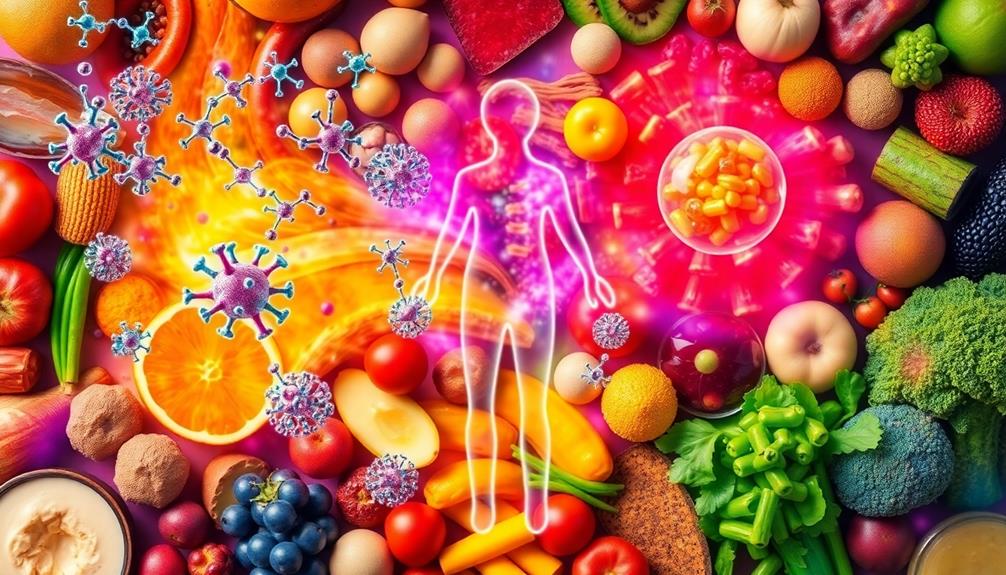
Numerous factors can contribute to the development of food allergies, and recognizing these can be key to prevention.
First, there's genetic predisposition. If allergies run in your family, your child might be more likely to develop one too. It's important to keep that in mind! Additionally, certain dietary patterns during early childhood, such as introducing diverse foods, may influence the risk of developing allergies, much like how traditional dishes such as Muamba De Galinha can provide a variety of nutrients.
Next, consider how immune system development plays a role. Babies born via cesarean section might miss out on important microbes, which can help their immune systems grow strong. To encourage healthy immune development, exclusive breastfeeding for the first 4 to 6 months is helpful, followed by introducing solid foods around 6 months.
Lastly, let's talk about environmental factors. In many industrialized countries, increased hygiene and changing diets mean kids aren't getting as much exposure to germs and microbes. This lack of exposure may lead to more allergies.
Here's a quick recap:
- Genetic predisposition: Family history matters!
- Immune system development: Birth method can influence allergies.
- Environmental factors: Modern hygiene habits may play a role.
Understanding these causes can help you make informed choices for your family's health!
Emergency Response and Management

In a food allergy crisis, immediate action is essential to guarantee safety and health. Understanding how to manage food allergies can be vital, especially when considering the diversity of culinary experiences like Asian cuisine that may contain unexpected allergens.
If you or someone you know experiences signs of anaphylaxis, don't panic! Follow these steps to manage the situation effectively:
- Administer emergency epinephrine: Use an epinephrine auto-injector right away, injecting it into the outer mid-thigh.
- Call for help: Dial emergency services to get medical assistance. Time is vital!
- Monitor symptoms: Keep an eye on the person's condition. If symptoms don't improve after 5 minutes, give another dose of epinephrine.
- Educate on allergen avoidance: Talk about how to avoid allergens in the future, ensuring you have a plan in place.
Frequently Asked Questions
What Is the Science Behind Food Intolerance Tests?
Food intolerance tests measure your body's IgG and IgA responses to certain foods. However, high false positives can confuse you, so always correlate test results with your actual symptoms for a more accurate understanding of your intolerances.
What Is the Root Cause of Food Intolerance?
Think of your digestive system as a car engine. If it's missing parts, like enzymes, it struggles. Food intolerance often stems from these missing components, causing your body to misfire with certain foods, leading to discomfort.
Why and How Do Food Allergy and Intolerance Develop?
Food allergies and intolerances develop due to your immune system's responses or digestive enzyme deficiencies. Factors like genetics, early food exposure, and gut health influence how your body interacts with certain foods.
Why Did Humans Develop Food Allergies?
Humans developed food allergies as a result of the immune system mistakenly identifying harmless proteins as threats. This misidentification leads to an immune response that can cause various symptoms you might experience after eating certain foods.
Conclusion
To sum up, understanding food allergies and intolerances helps keep everyone safe and happy at mealtime! Did you know that around 1 in 13 kids has a food allergy? That's a lot of little ones! By knowing the differences and being prepared, you can enjoy delicious meals together without worry. Remember, a little knowledge goes a long way, so keep learning and sharing. Let's celebrate food with joy and safety for everyone at your table!

